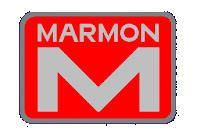MARMON Truck Wiring Diagram
 |
| marmon-truck-wiring-diagrams |
 |
| Marmon Truck |
The assembly of Marmon trucks began in 1964, but for the sake of completeness, it is worthwhile to tell about the events that caused the appearance of this brand's vehicles. By the early 1960's. The company Marmon-Herrington from Indianapolis, once famous for its off-road vehicles, was engaged in assembly of all-wheel drive conversions of Ford trucks and bus chassis, as well as the production of various industrial equipment. To expand production, the company made an attempt to enter the market of mainline truck tractors.
By June 1961, the prototype of the three-axle hatchless tractor model HDT-1 with an aluminum cabin was built. In the autumn of the same year, several more tractors of this type were built, which were sent for testing to large transport companies.
In 1962, in the shops of the Oneida bus section in Indianapolis, a serial production of truck tractors began, which became known as the HDT model. Serial tractors, unlike the prototype, received a slightly different cabin and, if desired, buyers could be equipped with either diesel engines Detroit Diesel with a capacity of 218 hp, or with 220-horsepower Caterpillar and Cummins diesels.
In July 1963, the Truck Division for the production of HDT truck tractors, which by that time produced 45-50 pieces, was purchased by Edrin Roop, a distributor of Marmon-Herrington in the southwest of the USA. Rupu got about 15 unfinished tractors and technical equipment for their assembly. All this he transported to Denton (Texas), where he founded a new company, called Marmon Motor Company, and its products - the brand Marmon.
Until 1933, this brand wore high-end cars from Marmon Motor Car Company from Indianapolis, which, in fact, was the forerunner of Marmon-Herrington. The borrowing of the long-disappeared name should have emphasized the continuity of the traditions of prestige and quality. The company was located in rented premises, and its initial staff numbered 30 people. Rup planned at the initial stage to collect one tractor a day, although, he said, the production area allowed to bring the output to 1200 cars per year.
Due to the fact that the assembly of Marmon trucks was carried out manually on individual orders, the volumes of the annual output were always small. For example, in the second half of 1973, 300 cars were assembled.
A complete renovation of the production program occurred in 1974, when the second generation Marmon tractors were created. The new model range included the bonnet models CHDT-AC (4x2) and CHDT-BC (6x4) with a hood made of fiberglass made in the style of the Kenworth W-900 and Peterbilt 359 trucks, as well as models with a cab above the HDT-AC engine (4x2) and HDT-BC (6x4).
Machines were created with the maximum consideration of the needs of their future owners, so 90% of the equipment, which was previously installed by order, became standard equipment. Now each car is without fail equipped with air conditioning, radio station, air suspension of the driver's seat, aluminum fuel tanks and other devices that improve comfort and performance.
New tractors were equipped as standard with 350-horsepower Cummins diesel engines, but the presence of radiator grids with a large cooling area enabled them to install prospective diesel engines with a capacity of 450-600 hp in the future. For cabless trucks mounted a cabin length of 86 inches (2.2 m) with a sleeper or a "day" type cabin, which was reflected in the model index. Since 1976, cars have been commissioned to install cabins 110 inches long (2.8 m) with two bunks.
In 1996, the owner of a transportation company from Australia, Peter Max, founded a small company, Max Marmon Handbuilt Trucks, in Melbourne, which assembled the Marmon P tractors. The trucks of the Australian assembly received the Max Marmon brand. The volume of output was insignificant.
In 1997, the management of the corporation TIC United, which included Marmon Motor, decided to stop the production of trucks. The last truck of Marmon brand left the assembly shop on February 5, 1997. It was a 125DHR tractor with an increased height of the sleeping compartment. In the vacated areas, Navistar International company assembled the trucks of the International series Paystar.

No comments:
Post a Comment